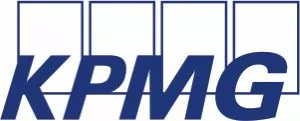i. Brief introduction
The Petroleum Industry Act, 2021 (PIA) provides a new fiscal and regulatory framework for Nigeria's petroleum industry. The PIA is a major milestone in a long history of efforts at reforming Nigeria's Petroleum Industry. As part of its reform drives, the PIA provides that all existing Oil Prospecting Licenses (OPLs) and Oil Mining Leases (OMLs) would be automatically converted to Petroleum Prospecting Licenses (PPLs) and Petroleum Mining Leases (PMLs) upon their expiration. Nonetheless, an option of voluntary conversion is provided for holders of OPLs and OMLs (Operator, Licensees or Lessees) under the erstwhile Petroleum Profit Tax (PPT) regime. The PIA is generally perceived as more investor-friendly, compared to the erstwhile PPTA. However, it appears that the PIA has not gained much traction with current licensees and lessees, as there has not been as much activity as expected in the conversion space since the passage of the PIA. This article discusses some salient factors for licensees in deciding whether to convert, some likely challenges in converting, and the role of regulators in mitigating these challenges and ensuring a seamless conversion process.
ii. Regulatory provisions on Conversion (Compliance)
The PIA stipulates certain compliance requirements for an operator seeking to convert its asset. Though some of these requirements are time–sensitive, they may be modified by Regulations issued by the Commission, the Authority, and the Federal Inland Revenue Service (FIRS).
The obligations prescribed for an operator who wishes to convert include the following:
- Separation of upstream, midstream and downstream operations;
- Incorporation of Host Community Development Trust;
- Establishment of Decommissioning and Abandonment Plan;
- Preparation and submission of Environmental Management Plan;
- Compliance with domestic crude oil and gas supply obligations;
- Submission of a yearly summary of royalties, fee, taxes, profit oil shares and other payments to Government;
- Submission of annual tax returns and payment of final instalment of hydrocarbon tax.
Notably, the PIA replaces the PPT regime with a two-tier tax system - the Hydrocarbon Tax (HCT) and Companies Income Tax (CIT). HCT is applicable at 30% for converted PML and 15% for PPL for both onshore and shallow waters operations, as well as marginal fields. Based on the introduction of the “reasonability” rule, the rationality of expenses will now be tested for its deductibility under HCT. Operators are required to file tax returns based on PPLs or PMLs. Companies engaged in upstream petroleum operations will also be taxed under CIT and are required to settle their CIT liability on an actual year basis. However, HCT will not be deductible for CIT purposes.1
iii. Timeline for conversion
Operators are given the timeline of 18 months for voluntary conversion to PIA Fiscal terms, otherwise an operator can choose to wait until the expiration of its existing lease. Holders of existing OPLs and OMLs can apply to the Commission for conversion following the guidelines in the Conversion and Renewal (Oil Prospecting Licences & Oil Mining Leases) Regulations 2022 published by NUPRC. Where the Commission has approved a conversion request pursuant to sub-paragraph 3 of these Regulations, the parties may agree to sign the respective conversion contract at any time after such approval and prior to the effective date of the conversion contract.
The Regulations also prescribe that the effective date of a conversion contract, pursuant to section 92(4), shall be February 16, 2023, or such earlier date upon the expiration of the OPL or OML.2
iv. Fiscal and Tax Provisions Upon Conversion
An Operator cannot benefit from the fiscal provisions of the PIA until the conversion process is concluded, i.e., signing of the conversion contract.
Pending the conclusion of the conversion process, a Licensee or Lessee will continue with its filing obligations under the PPT. However, the Regulations prescribe that for upstream petroleum operations, PPT shall cease to apply on the commencement of the first day of the calendar month following the conversion date or renewal date. From that date HCT will apply for onshore and shallow water, and CIT will apply to all terrains.
For onshore, shallow water and deep offshore, the royalty rates applicable to crude oil and condensates under the Petroleum Act, shall be reduced to the royalty rates based on production pursuant to paragraphs 10(2), 10(3) and 10(4) of the Seventh Schedule of the PIA.
For frontier basins, the royalty rate of 7.5% under prior legislation shall remain. For the onshore and shallow water, the PPTA did not provide for a royalty by price. Upon conversion or renewal, the royalty by price pursuant to the provisions of paragraph 11 of the Seventh Schedule of the PIA shall apply. The applicable dates for the royalties under the PIA is the first day of the calendar month following the conversion date or renewal date.3
v. Role of Regulators
- NUPRC
The NUPRC oversees the entire conversion process and receives and approves the application for conversion. The NUPRC has published the Conversion and Renewal (Oil Prospecting Licences & Oil Mining Leases) Regulations to guide licensees and lessees on the necessary conversion steps and procedure. - FIRS
The FIRS collects the HCT and CIT payments on behalf of the Government, ensures that there are no tax leakages in the conversion process, and that appropriate tax payment is made in line with the PIA. This usually requires some synergy and information sharing between the NUPRC and the FIRS. The FIRS has also published its Circular No 2022/20 on Clarification on Taxation of Production Sharing Contracts (PSC) and Incorporated Joint Ventures (IJVC) Operations Under the Petroleum Industry Act to guide Licensees and Lessees undergoing conversion.
vi. Implementation Challenges
To take advantage of the favourable tax regime of the PIA, some operators have taken steps to voluntarily convert from the PPT to the PIA regime. However, the following challenges have impeded their smooth transition from PPT to PIA.
- Delay in signing of Conversion contract.
As is typical with public institutions in Nigeria, the conversion process and signing of conversion contract has been hampered by bureaucratic delays, notably the change in government administration in the last few months. Although the NUPRC has been quite timely with the publication of the regulations to guide operators, there is room for improvement. Relatedly, there is no certainty on who should approve the final conversion process since there is currently no substantive Petroleum Minister. - Possibility of overpayment of tax and recovery mechanism
In determining the tax liability of an operator during a conversion, for upstream petroleum operations, the Regulations prescribe that the prior PPT shall apply during the months of the accounting period prior to the PPT termination date and the HCT and CIT shall apply during the months of the accounting period starting from the PPT termination date. For allocation purposes, all revenues, expenses, and capital allowances are determined monthly for the accounting period during which the conversion date or renewal date occurs.
An operator will therefore have to file cessation estimates under the PPT for a few months in the year, and HCT for the remainder of the year. However, for deep water operations where HCT is not applicable, an operator who has filed cessation estimates for some months in the cessation year will likely end up with an overpayment given the PPT rate of 65.75% as opposed to the CIT rate of 30%. In this case, the possibility of recovering such excess payment from the FIRS is very slim. Alternatively, the Licensee may opt to net off the excess payment against future CIT liability. Sadly, it may be a herculean task to secure the approval of the FIRS to this arrangement.
vii. Conclusion
There is no gainsaying the fact that the PIA has introduced some positive reforms to the petroleum industry in Nigeria. While some operators may still be waiting to see how things play out, others have taken steps to initiate conversion process with the NUPRC. It is imperative that those who have chosen to convert enjoy a simple and seamless conversion process devoid of needless delay, bureaucracy, and technicalities. The NUPRC will need to improve its synergy with the FIRS and engage more extensively with the operators to resolve the current challenges in the conversion process. This will in turn encourage operators who are still playing the waiting game to take steps to key into the provisions of the PIA with the attendant overall growth and development in the petroleum industry.
Footnotes
1. Petroleum Industry Bill (PIB 2021): A gamechanger? KPMG Nigeria
2. Regulation 16, Conversion and Renewal (Oil Prospecting Licences & Oil Mining Leases) Regulations 2022
3. Ibid, regulation 18
The content of this article is intended to provide a general guide to the subject matter. Specialist advice should be sought about your specific circumstances.



